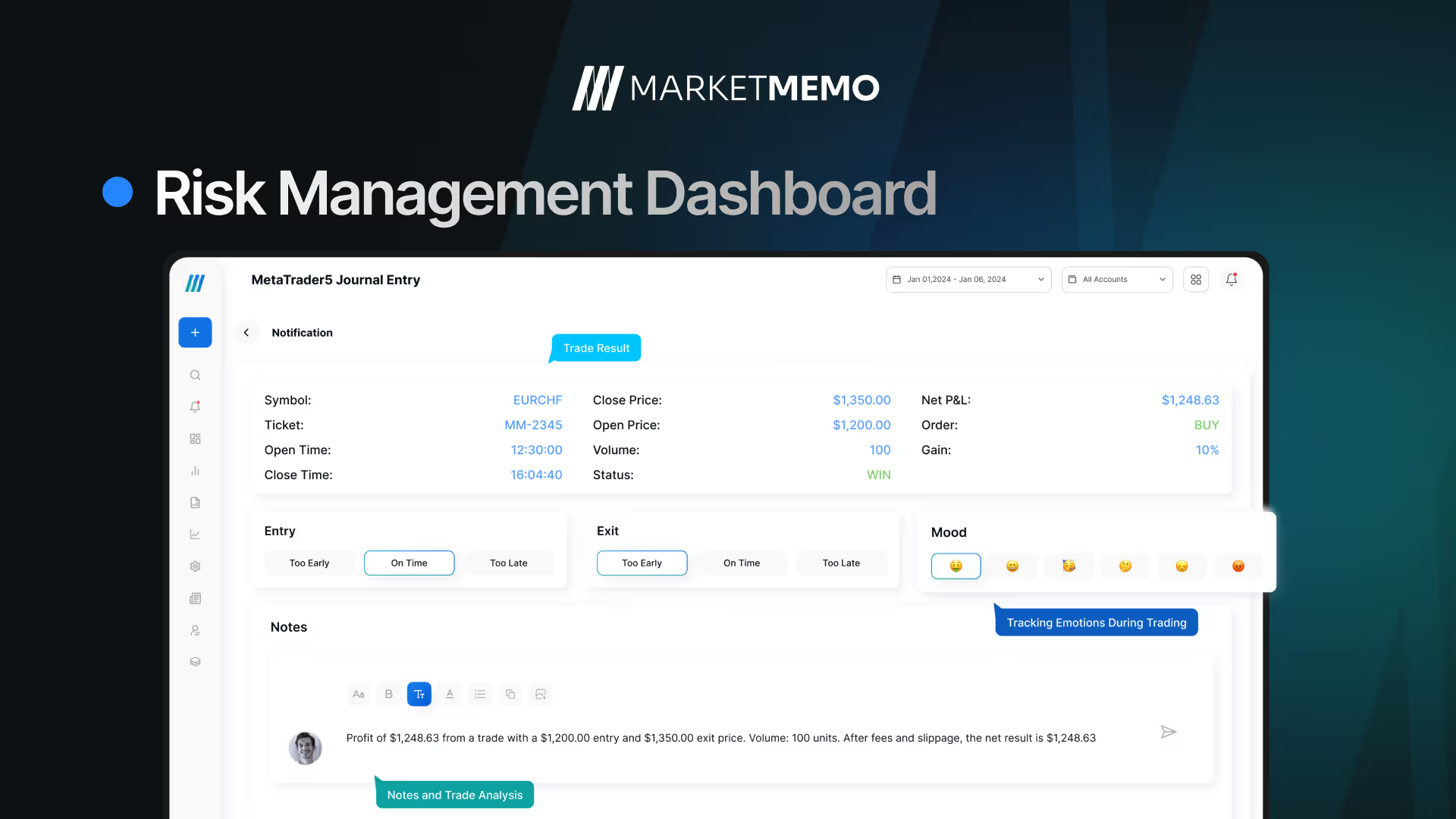The Role of a Trading Journal in Managing Risk and Reducing Losses

In the fast-paced world of trading, risk is unavoidable, but losses don’t have to be. While strategies and setups are important, consistent success often comes down to one thing: your ability to learn from the past and manage risk in the present.
That’s where a trading journal comes in, not as a nice-to-have, but as a critical tool in protecting your capital and fine-tuning your edge.

Why Risk Management Matters More Than Wins
Most traders focus too much on winning and not enough on preserving capital. The truth is, even profitable strategies can fall apart without strong risk management. A trading journal provides structure and insight, allowing you to:
- Spot patterns of consistent loss
- Quantify risk per trade
- Track drawdowns and recovery times
- Avoid emotionally driven decisions
1. Revealing Your Real Risk Exposure
Without clear records, it's easy to underestimate how much you’re risking. A trading journal like MarketMemo helps you log trade size, stop loss, and position value — giving you instant clarity on how much capital is at stake.
NOTE: Journaling your R-multiple (risk-to-reward ratio) on each trade helps you filter out low-quality setups over time.
2. Identifying Losing Patterns Before They Compound
Have you noticed you lose more when trading news events? Or that early morning entries tend to backfire?
Your brain might forget, but your trading journal won’t.
By consistently logging and tagging trades, you’ll begin to notice repeat behaviors that quietly drain your account. These “leaks” are nearly impossible to detect without written records, but once you see them, you can patch them fast.
3. Tracking Emotional Triggers and Impulsive Mistakes
Risk doesn’t always come from market volatility, it often comes from you.
A journal allows you to note your emotional state: Were you revenge trading? Did you over-leverage after a win? Did you hesitate and miss your entry?
Over time, you’ll develop a risk profile not just for your trades, but for yourself. And that’s powerful.
4. Enhancing Discipline and Rule-Based Trading
One of the most underrated benefits of journaling is accountability. When you know you’ll have to write down every trade, it naturally reinforces better habits:
- Respecting stop losses
- Waiting for setups
- Avoiding overtrading
- Trading smaller during drawdowns
This isn't just discipline, it's data-driven growth.
5. Quantifying Performance to Cut Bad Strategies Quickly
A trading journal with performance analytics (like MarketMemo) allows you to break down performance by:
- Strategy
- Time of day
- Asset type
- Market conditions
This lets you double down on what works and eliminate what doesn’t, before it costs you big.
6. Preventing the Emotional Spiral of Losses
Let’s face it, taking a big loss feels terrible. But what makes it worse is not knowing why it happened.
A detailed journal gives you something tangible to review, helping you regain control, reset, and avoid cascading losses driven by panic or frustration.
7. Risk Controls You Can Build Into Your Journal
Here are risk management metrics and notes every trading journal should include:
- Entry & exit price
- Position size
- Risk per trade (%)
- Stop-loss / take-profit level
- Trade rationale
- Emotional state
- Trade result & notes
With MarketMemo, these can be logged in just a few clicks and turned into insights automatically.
Final Memo: Your Journal Is Your Risk Manager
If you’re serious about improving as a trader, a journal isn’t optional, it’s essential. It keeps you honest, focused, and aware of the real risk factors hiding in your process.
With tools like MarketMemo, you get a sleek, all-in-one journaling experience that not only tracks your trades, but helps you evolve.
Ready to reduce your losses and take control of your risk?
Start your free MarketMemo trial now!


